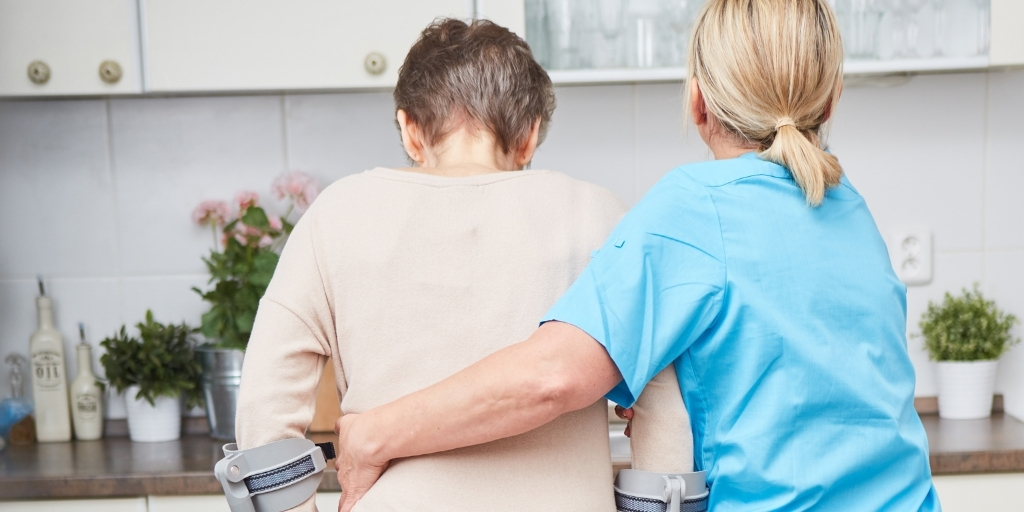- +1.888.528.8757
- office@doctorspreferredhhc.com
- Monday – Friday 9 AM – 5 PM
Stroke, unfortunately, is a widespread problem nowadays. Yet, many people don’t want their relatives to stay at the hospital for the rehabilitation process and prefer in-house care. As a matter of fact, everyone knows how difficult it is to take care of a person who has recently faced a stroke. It requires a lot of effort and attentiveness. So, not everyone can deal with it and many people opt to call for an in-house care specialist.
Yet, there are some small tips you need to master to help your loved ones overcome the rehabilitation difficulties.

In fact, the rehabilitation process is difficult mainly because of the patient’s immobility. The always lying down position may cause different difficulties and illnesses such as dectibus, pneumonia, backaches, etc. That’s why many specialists recommend turning the position of a patient every two hours. For those who are conscious, the doctors require breathing therapy. Breathing exercises consist of inflating rubber balls or a lifebuoy. The room of a patient should always be ventilated. But be cautious to put on the patient’s warm clothes so as not to catch a cold.
Regardless of the severity of the stroke, most of the body’s functions can be restored with effective treatment and active participation of the patient in rehabilitation operations.
A broad spectrum of rehabilitation techniques, including therapeutic gymnastics and massage, are required for the patient.
To begin, turn the bedridden patient every two hours to prevent bedsores from forming. Lay the ward’s paralyzed arm and leg properly in the “on the back” position.
To avoid the formation of stiffness in the shoulder joint and the onset of discomfort in it.
Place a chair next to the bed on the paralyzed side and a huge pillow on it so that the corner of the cushion is under the patient’s shoulder joint.
Place the patient’s arm on the pillow at a 90° angle to the side (palm up) so that the shoulder joint and the entire arm are at the same horizontal level.
Place the roller between the arm and the chest to keep the arm in the proper posture; if necessary, a 0.5 kg sandbag can be placed on the roller.
Bend the patient’s paralyzed leg at the knee by 15-20 degrees. Underneath the knee, place a roller. Fix the foot in the midst of its range of motion, between flexion and extension, with a stand.
Patients who have had a stroke typically require assistance with daily tasks such as eating, clothing, and sanitary self-care. This necessitates patience and balance from family members. It is impossible to make the patient feel helpless; instead, it is critical to underline his progress in rehabilitation to encourage him to try again.
Patients may become irritated or refuse to take prescriptions; it is best to discuss such episodes with the attending physician and psychologist, since they may indicate post-stroke depression.
It is vital to generate conducive rehabilitation settings, such as;
Communication with family members has been shown to improve the condition of post-stroke patients, but it can be exhausting. As a result, it is important to establish a daily routine and stick to it, as well as to schedule visits to the patient with family and friends.
The possibility of developing post-stroke depression has already been mentioned. A stroke throws the patient’s life into disarray and has a detrimental impact on both his physical and mental health. As a result, psychotherapy consultations are required – this is an important component of restorative treatment.
Psychotherapy may be necessary by the patient’s family members in some instances. It aids in the restoration of internal balance, as well as a deeper understanding of a person who has changed as a result of disease but remains a close and valued friend.
One of the most essential milestones on the road to recovery is taking care of a patient at home. And if there are any issues or a need for skilled medical treatment, you can call an in-house specialist.

As a matter of fact, overcoming the rehabilitation period of a stroke is essential for the patient and requires a lot of effort and knowledge. In many cases, it is possible to help the patient fully recover.
As a member of a family, a caregiver, or just a related person you’ll also need to take some rest as it is really difficult and tiring to always be attentive and take care of another person.
For the nutrition and special therapies you’ll need to contact the doctor as the stroke requires an individual approach for every patient.
In case you need a helper during the in-house care process, you can contact the Doctors Preferred Home Health Care specialists.